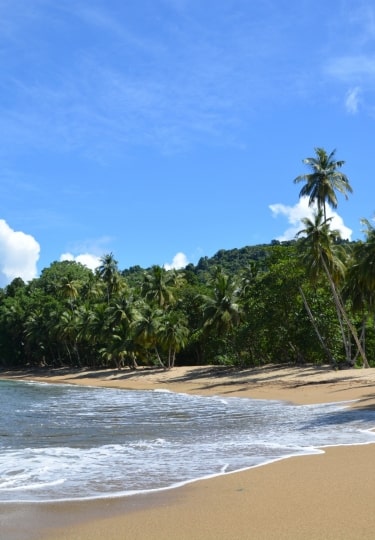Tobago, basking in the Southern Caribbean, might be one of the region’s smaller islands—roughly 25 miles in length and six miles wide—but it’s also one of the most exuberant for its treasure trove of wildlife.
Some of the best things to do in Tobago include bird watching in mountainous rainforests, discovering sweeping unspoiled bays, and sampling local flavors in relaxed villages. With the Atlantic Ocean to one side and the Caribbean Sea to the other, Tobago attractions also include snorkeling among the tropical reefs that surround the island.
Scarborough, Tobago’s compact capital, has a village feel with reminders of the island’s colonial past visible in characterful architecture and landmarks such as Fort King George. One of the many great things about Scarborough is the ease with which you can explore it on foot during a short stay.
Here are 11 of the most brilliant Tobago attractions to discover on your next Caribbean vacation.
Snorkel off Pigeon Point Beach
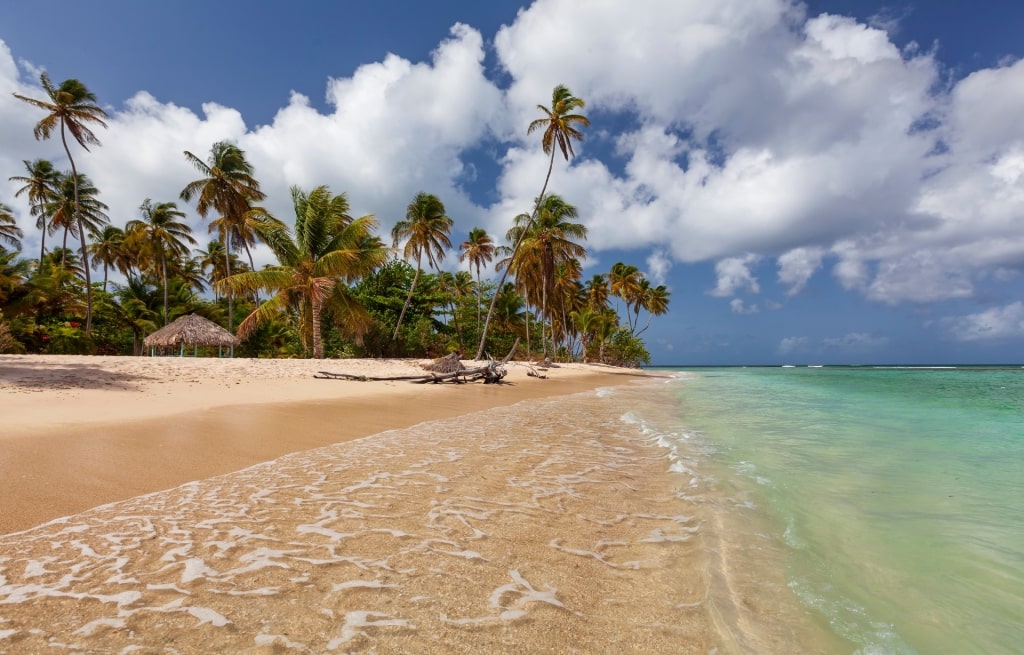
Pigeon Point Beach
One of the best things to do in Tobago is to dive into Pigeon Point Beach’s delicious waters for a thrilling snorkeling session. Located on the island’s northwest tip, Pigeon Point consists of three palm tree-fringed beaches, North, Main, and South Beach.
Main Beach, home to Pigeon Point’s famous thatched-roof jetty, is one of the best locations for snorkeling in the Caribbean. Join the scattering of bobbing boats in the bright-turquoise ocean to witness an array of coral and tropical fish.
Maximize your time in the water by joining a guided snorkeling tour to the shallow Buccoo Reef, a protected marine park just off the seashore.
You’ll only need a snorkel and mask—not diving equipment—to see some of the region’s extraordinary ocean life, such as shimmering blue parrotfish, yellowtail snapper, green loggerhead turtles, giant manta rays, and frolicking dolphins.
As well as being one of the most idyllic beaches in the Caribbean, Pigeon Point is exceptionally well-equipped, too. Sun loungers, watersports hire, boat tours, and restaurants are available.
Experience Scarborough on Foot
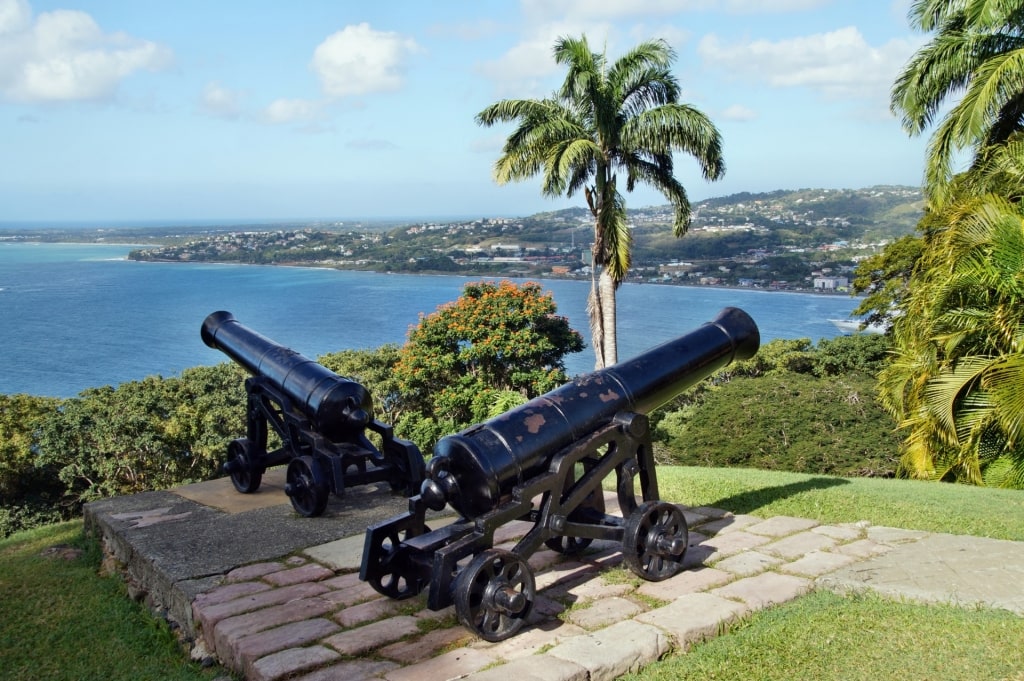
Fort King George
Scarborough—much like the rest of Tobago—is largely underdeveloped, which is perfect for travelers who like to experience an authentic slice of island life.
Instead of big-name restaurants and chain bars, you’re more likely to discover homely Caribbean fare served in local cafés and roadside food shacks.
From the center of Scarborough, walk uphill to Fort King George, which takes roughly 20 minutes at a steady pace. While soaking up the stunning views, learn about Tobago’s heritage, including the periods of British and French colonization.
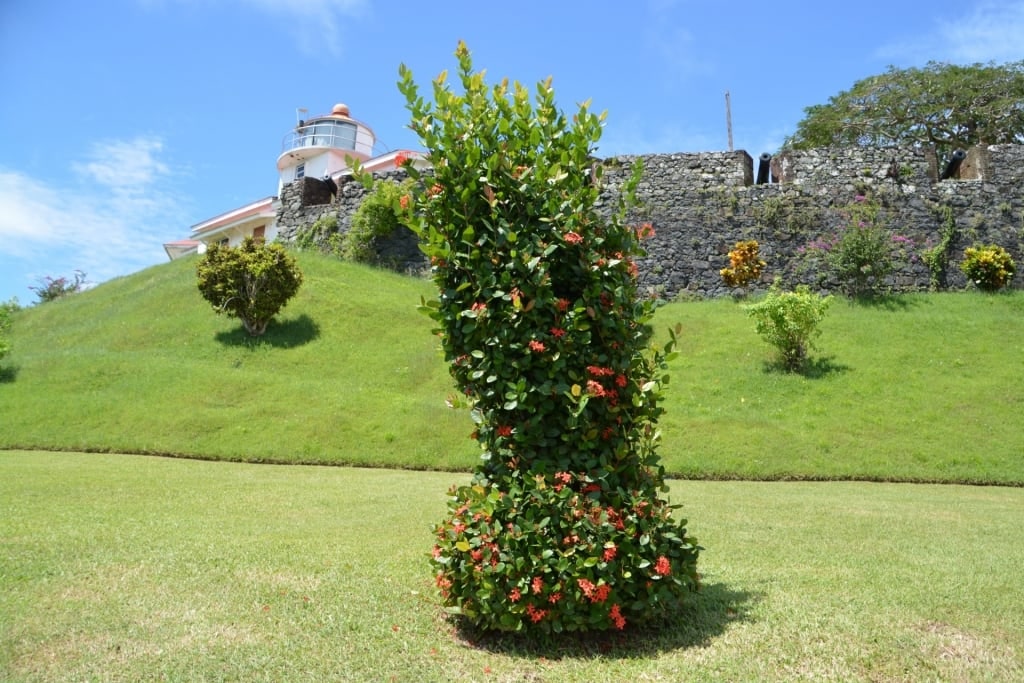
Fort King George
Fort King George and a scattering of buildings, including barracks, kitchens, plus a parade ground, were constructed between 1777 and 1786, with additions made by the French and British during their respective periods of rule.
This Tobago attraction underwent several name changes in its formative years, including Fort Castries, Fort Republique, and Fort Liberté under the French. The final name was decided in 1804, after Britain’s King George III.
Fort King George was largely destroyed by a hurricane in 1847, though restoration works are currently in progress to restore this heritage site.
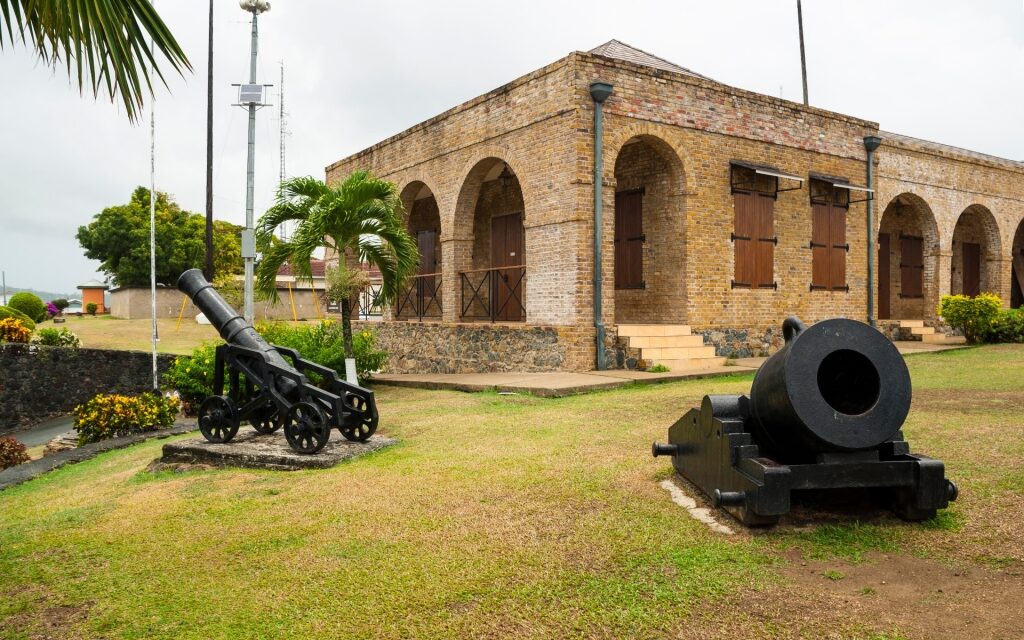
Tobago Museum
Wander around the charcoal-black cannons, pointing towards the sea from the picturesque grounds. Visit the Tobago Museum, housed in Fort King George’s former officers’ quarters, featuring a collection of military relics, artifacts, paints, and maps.
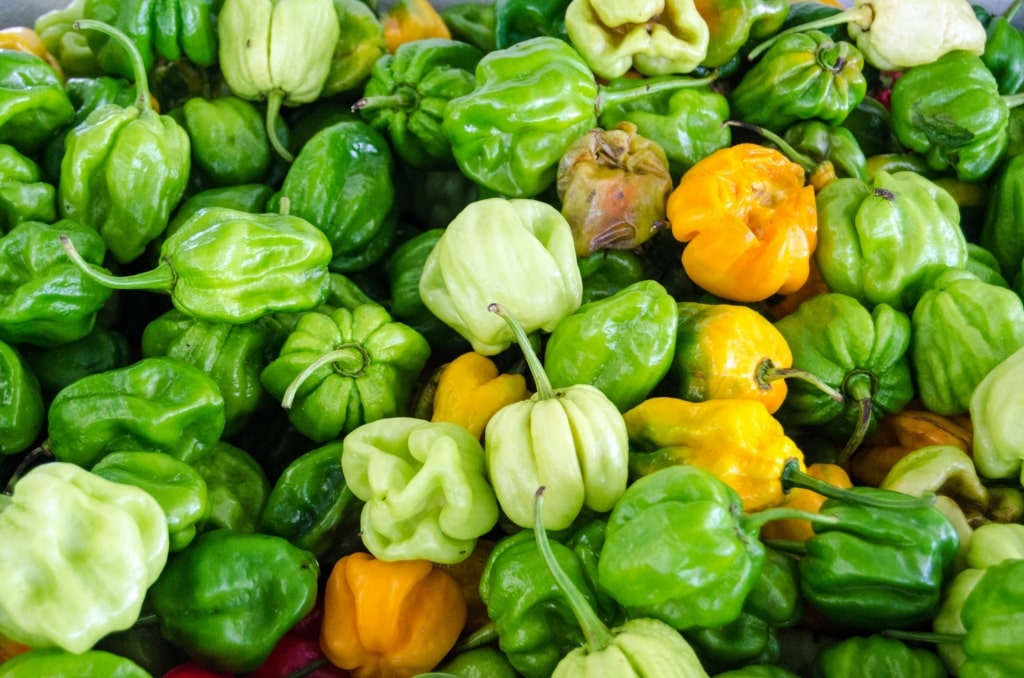
Scarborough Market
On Wilson Street, browse the stalls bursting with colorful island produce at Scarborough Market. With space for 242 vendors, Scarborough Market reopened in December 2020 following a $36 million investment.
You’ll find sellers hawking everything from homemade hot sauces and land crabs to leather crafts and souvenirs. The most popular items are fruits and vegetables, with stalls overflowing with pineapple, bananas, watermelon, peppers, and a variety of greens.
Behind Scarborough Market, on Gardenside Street, is Scarborough Botanical Garden, located on a former sugar plantation. Wander around the garden, taking shade under stately silk-cotton trees and tall palms.
Stroll Barefoot in Buccoo Bay
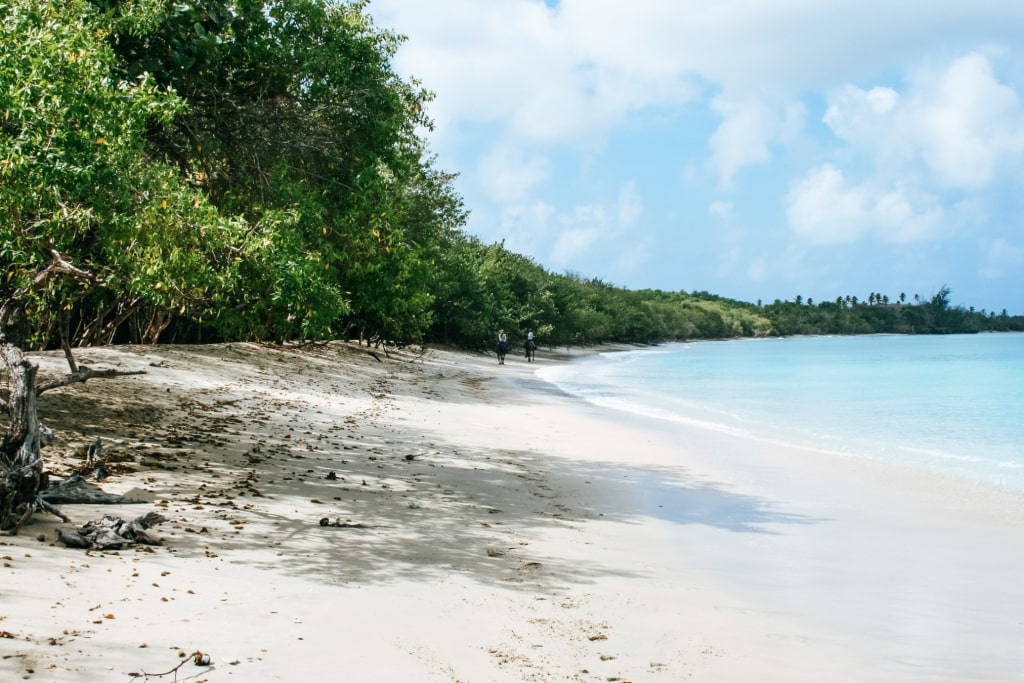
Buccoo Bay
Lying on Tobago’s southwest shore, a short drive from Scarborough, Buccoo Bay is the perfect destination for a beach walk and swimming in the island’s warm, aquamarine water.
Dense mangroves meet the calm, clear ocean on the sweeping Buccoo Bay—an area famous for its annual Easter goat race (yes, goat race, not boat race) and idyllic sweep of white sand. Look out for the horses that frequent Buccoo Bay, wading through the water to cool off.
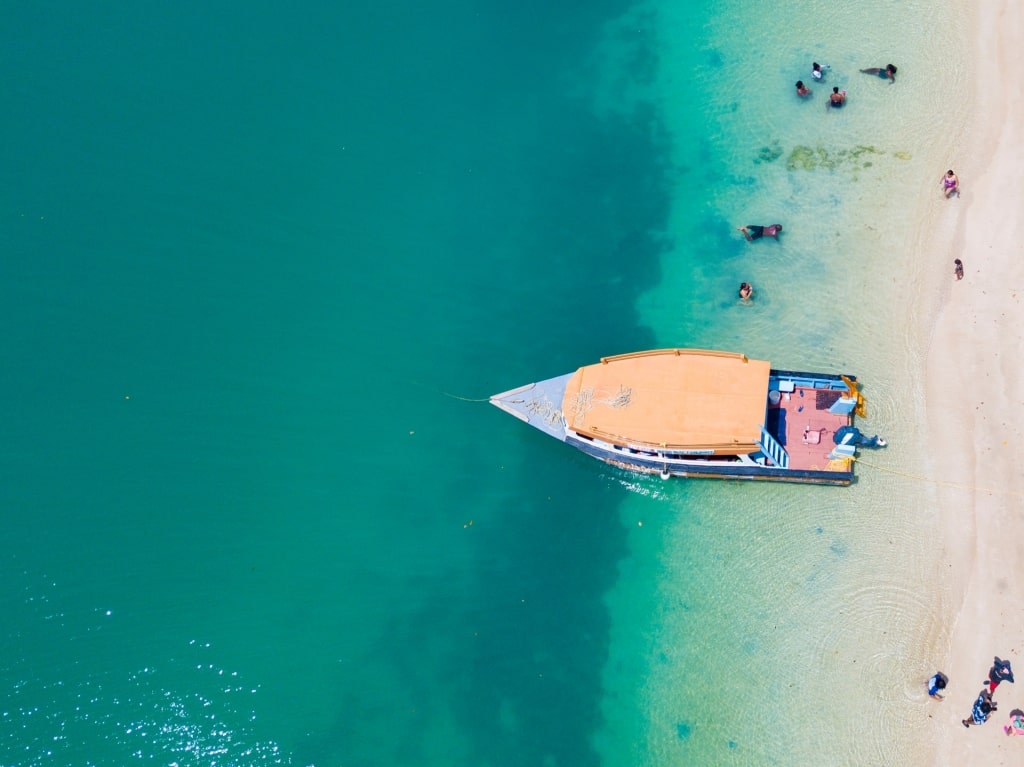
Buccoo Bay
Glass-bottom boat tours are available from the jetty, which offer the chance to see an array of iridescent fish. A selection of restaurants, bars, and entertainment facilities are located in Buccoo village, moments from the beach.
Birdwatch in Tobago Main Ridge Forest Reserve
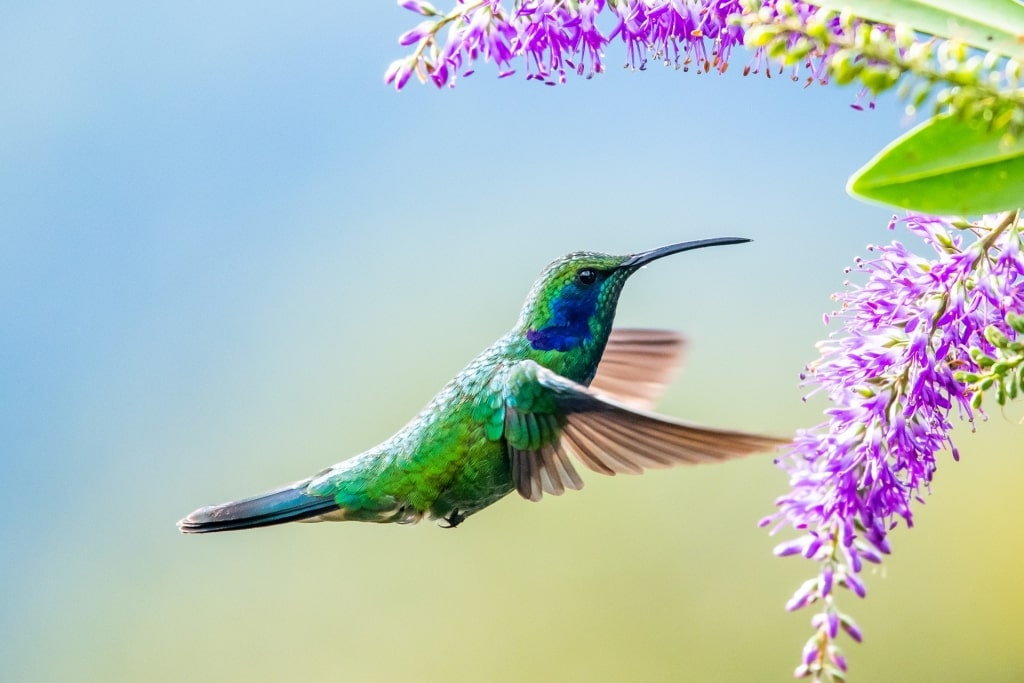
Sabrewing hummingbird
The UNESCO-listed Main Ridge Forest Reserve covers two-thirds of Tobago with lofty vegetation that reaches a height of almost 2,000 feet. A hike through this central ridge to spot some of the magnificent birdlife is one of the best things to do in Tobago.
Main Ridge became a protected reserve in 1776, making it the oldest protected forest reserve in the world. The reserve is teeming with precious wildlife, including up to 16 species of mammals, 24 varieties of snake, and 16 types of lizard. Birdlife is one of the biggest attractions, with 210 species calling this protected forest home.
Carry binoculars to aid your search for the rare and endemic white-tailed sabrewing hummingbird. Following the devastating Hurricane Flora, which struck in 1963, the sabrewing’s population dwindled to near extinction, though it’s thought to have almost recovered and was declared an Environmentally Sensitive Species in 2005.
Spot the sabrewing by its pencil-thin black bill, emerald-toned feathers and partial white tail.
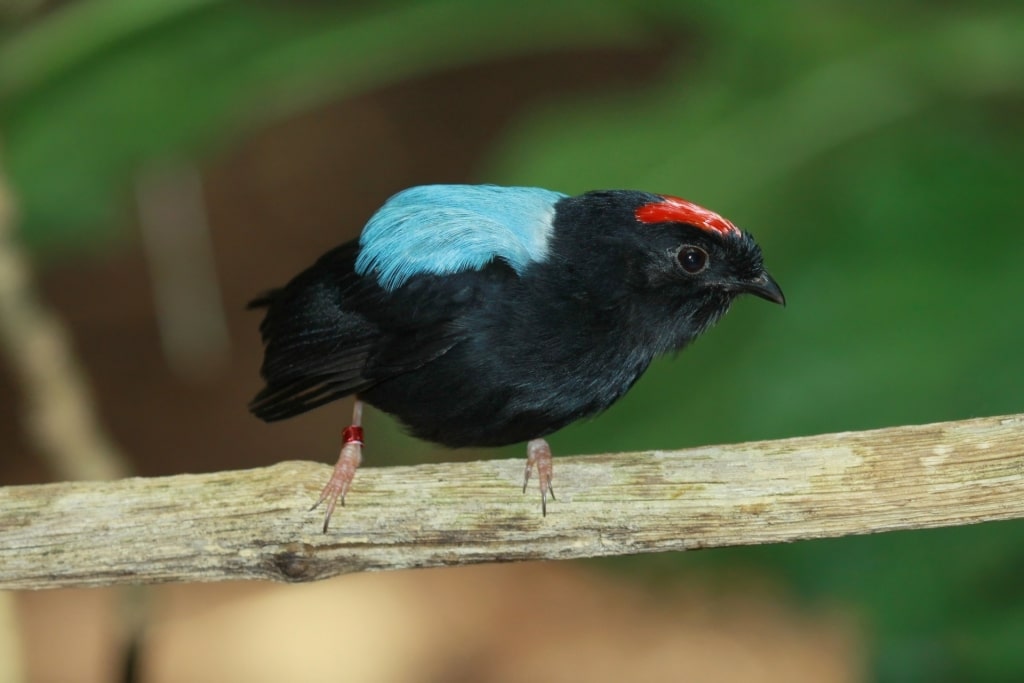
Blue-backed manakin
You might also see blue-backed manakin, olivaceous woodcreeper, and yellow-legged thrush as you hike the Gilpin Trace trailhead through the spine of Tobago.
Read: Where to Find the Best Hiking in the Caribbean
Discover Pirate’s Bay
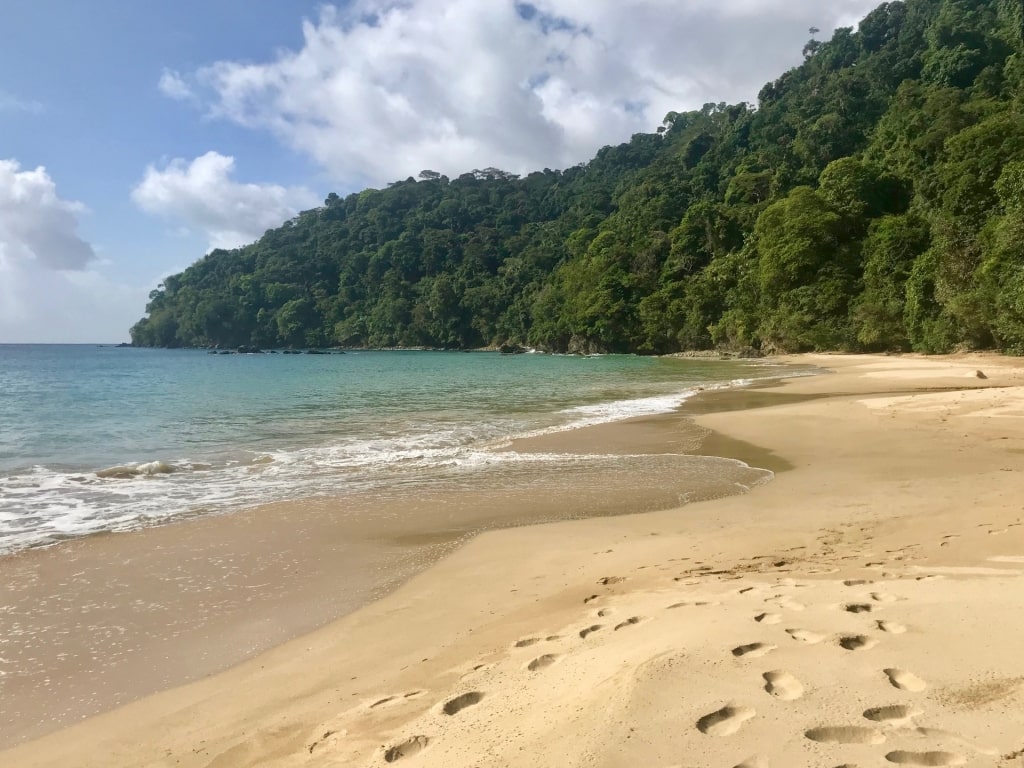
Pirate’s Bay
Once a haven for the Caribbean’s plentiful buccaneers, Pirate’s Bay is now a retreat for travelers looking to kick back on a slither of Tobago’s secluded seashore.
Located in Tobago’s northeast town of Charlotteville, Pirate’s Bay is a pristine and untouched Caribbean beach, flanked by tropical forests with gleaming-white yachts gently bobbing on the horizon.
Pirate’s Bay is an adventurer’s beach, accessed either via a boat ride from Charlotteville’s timber jetty or by walking down a concrete path through the rainforest that includes dozens of steep steps. The journey to reach the soft sand is worth every step.
Wade into the ocean to cool off and search for ripples of dazzling yellowtail damselfish, spotted filefish, and French angelfish. In Pirate’s Reef, you’ll get a glimpse of the otherworldly coral formations on the seabed.
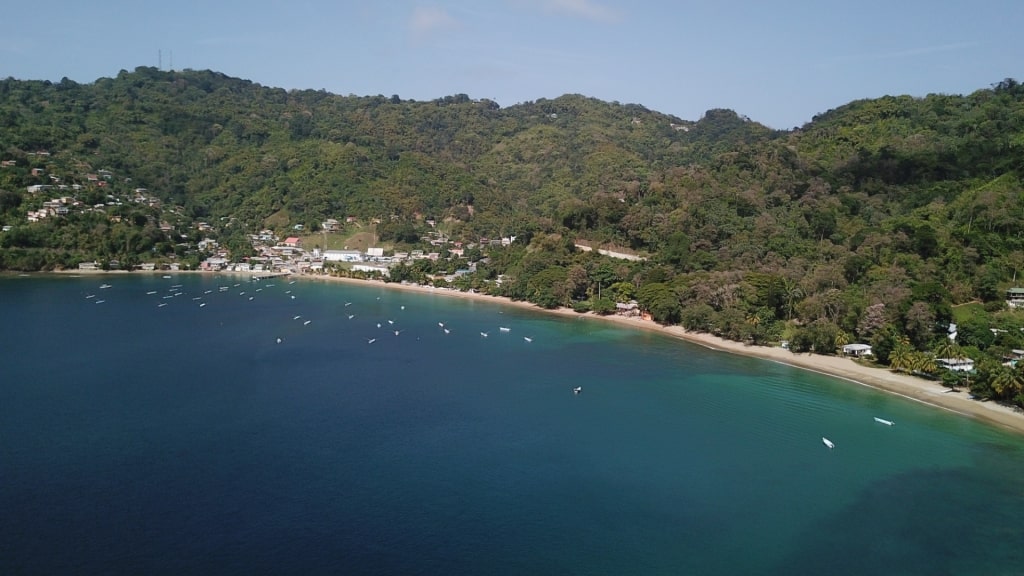
Charlotteville
Pack all that you’ll need for a day at the beach as there are limited facilities in Pirate’s Bay. In picturesque Charlotteville, you’ll find a row of charming beach-huts-turned-restaurants serving fresh seafood, chilled beer, ice cream, and sodas.
Marvel at Argyle Waterfall
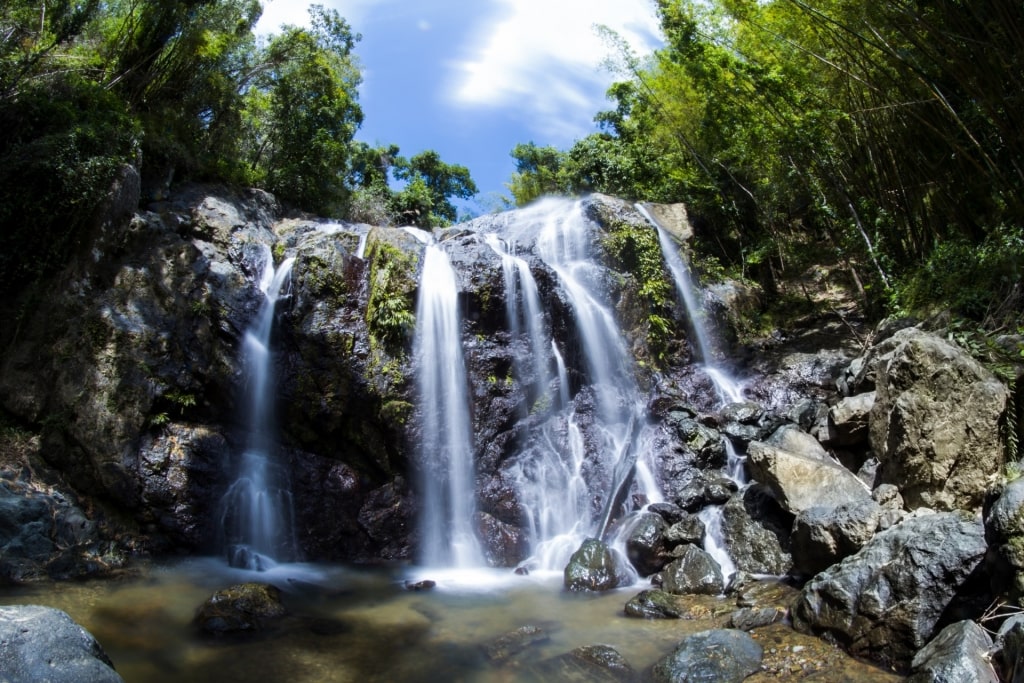
Argyle Waterfall
Surrounded by giant boulders and bottle-green hinterland, Argyle Waterfall in Roxborough is a three-tier cascade of water that plunges 175 feet into a shimmering pool.
Argyle is the island’s highest waterfall, reached via an easy, breezy 15-minute trek from the Roxborough Visitor Service Co-op office on a signposted trail.
Look for dazzling tropical butterflies and listen for the rushing, thundering sound of the falls—you’ll hear them long before you see them. You can hike through a bushy, ascending path to reach the second tier of the falls—though you might well be greeted by dense mist. Here you’ll find natural rock pools that you can lie in to cool off.
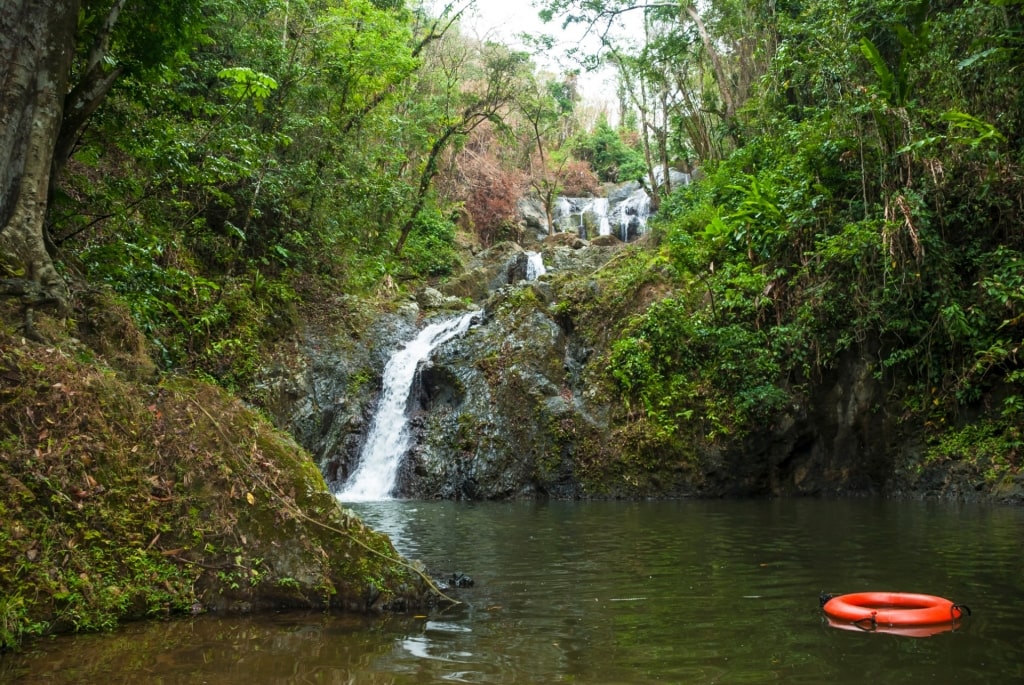
Argyle Waterfall
One of the best things to do in Tobago enjoys a soothing dip in the deep pool at the bottom of the falls. Hang onto an overhanging vine and make a splash into the water to bathe in this utterly idyllic spot. Remember to pack a swimsuit and a towel.
Visit Tobago Cocoa Estate
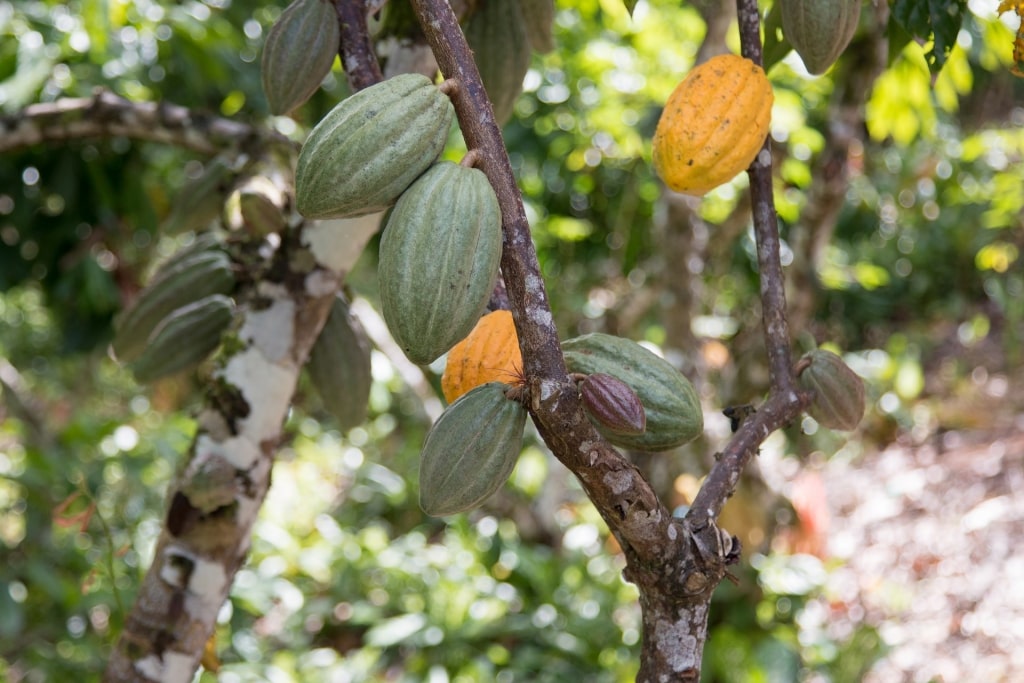
Tobago Cocoa Estate
If you’re a chocolate lover, or simply enjoy learning about the cultivation of Caribbean-grown produce, this Tobago attraction is not to be missed. Tobago Cocoa Estate is an organic-certified cocoa bean farm in a green-filled heritage park, not far from Argyll Waterfall.
Visitors can learn about the history of cocoa in Tobago and gain an insight into how the cocoa bean and chocolate are produced.
Established in 2006 and producing its first cocoa harvest in 2009, Tobago Cocoa Estate produces single-estate, 100 percent Trinitario cocoa. Once harvested, the beans are sent to Paris-based artisan chocolatier François Pralus, of the lauded Maison Pralus, who produces the award-winning chocolates.
One of the best things to do in Tobago is to take part in an indulgent rum and chocolate tasting session at the Tobago Cocoa Estate. Learn about the distillation process, different styles of Caribbean rum, and its versatility as a drink, before sampling a smooth selection of aged rums paired with refined chocolates. Make sure to sample some of the estate’s heavenly Buccoo Reef sea salt chocolate.
Swim at Nylon Pool
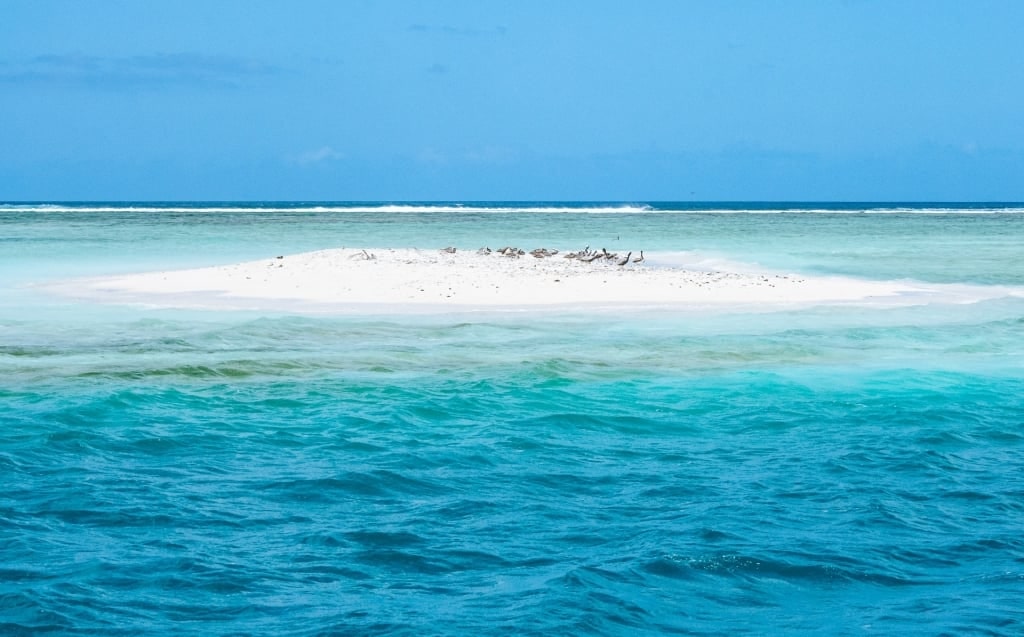
Nylon Pool
Tobago is full of beautiful swimming spots, including the lagoon-like Nylon Pool, adored for its calm, three-foot-deep natural pool.
Accessed via a boat ride (usually of the glass-bottom variety) from either Pigeon Point or Store Bay, Nylon Pool is created by an offshore sandbar, located just south of Buccoo Reef.
Lie back and enjoy a rejuvenating float or a gentle paddle in the balmy water. Pack snorkel and goggles to dip your head below the surface before it’s time to return to shore.
Sunbathe on Englishman’s Bay
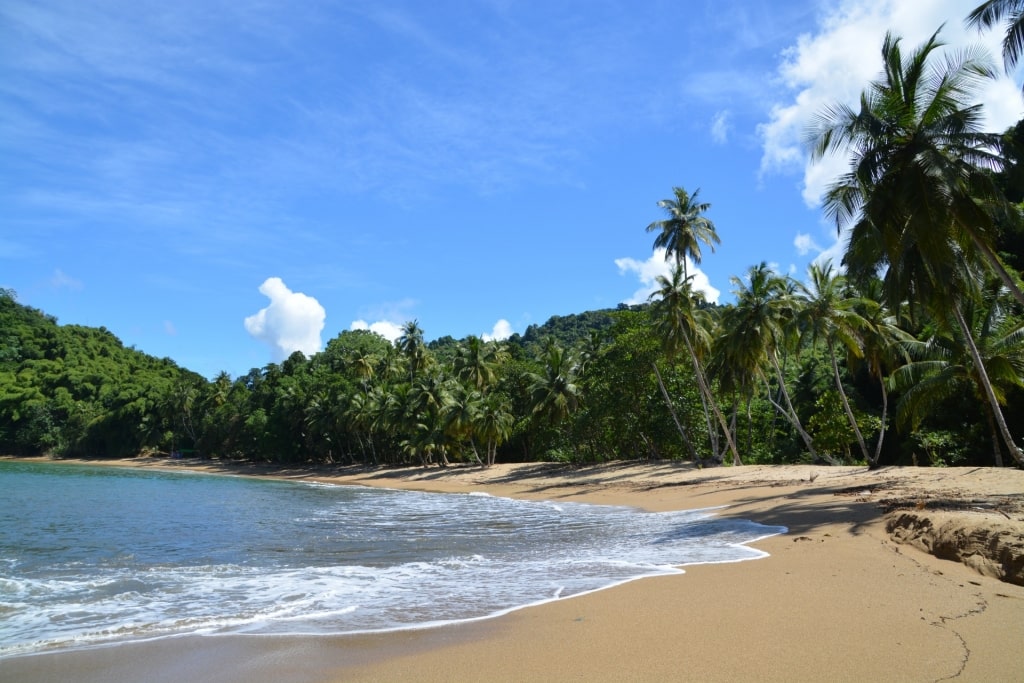
Englishman’s Bay
Englishman’s Bay is a true picture of paradise on a sheltered stretch of Tobago’s north coast, between the pretty towns of Castara and Parletuvier.
Cradled by verdant jungle that tumbles down onto the beach, punctuated with swaying palm trees, Englishman’s Bay has a remote feel and is perfect for a casual day of swimming and sunbathing.
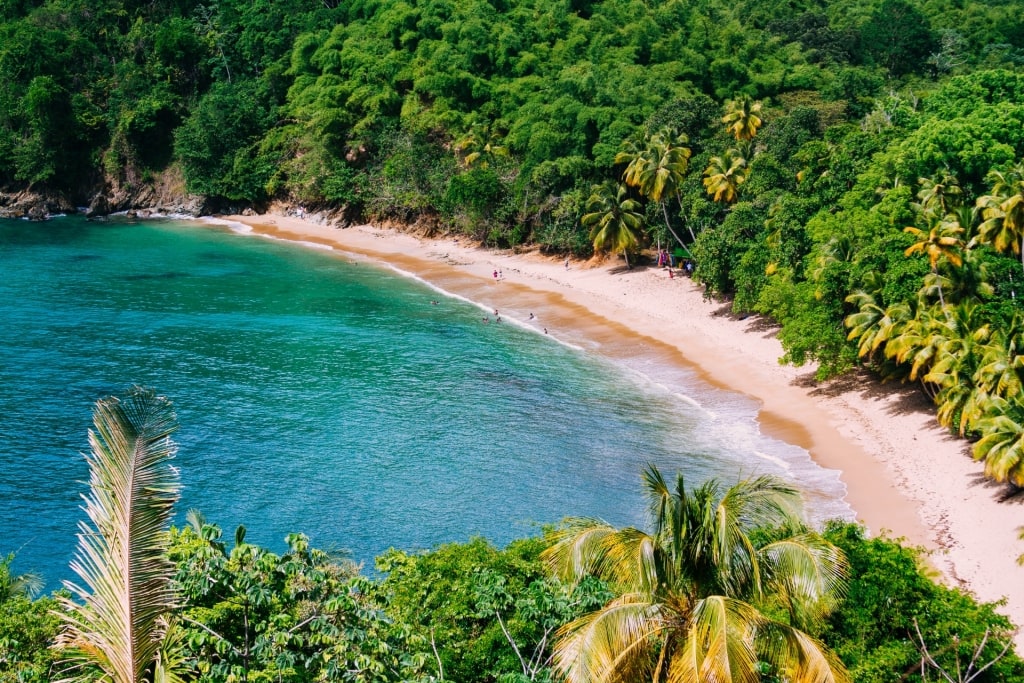
Englishman’s Bay
Wander the mile-long shoreline to find a secluded spot where you can curl up or stretch out on the sand. Snorkel over Englishman’s Bay Reef to search for tropical fish and look out for the migratory leatherback turtle on the beach.
Between March and September, the turtles return to Tobago to lay their eggs. If you’re lucky, you may witness eggs hatching on the beach. Remember to always maintain a safe distance from a hatching site.
Umbrellas and chairs are available and there’s a single food shack, Eula’s Restaurant & Souvenir Shop, on the beaches.
Explore Corbin Local Wildlife Park
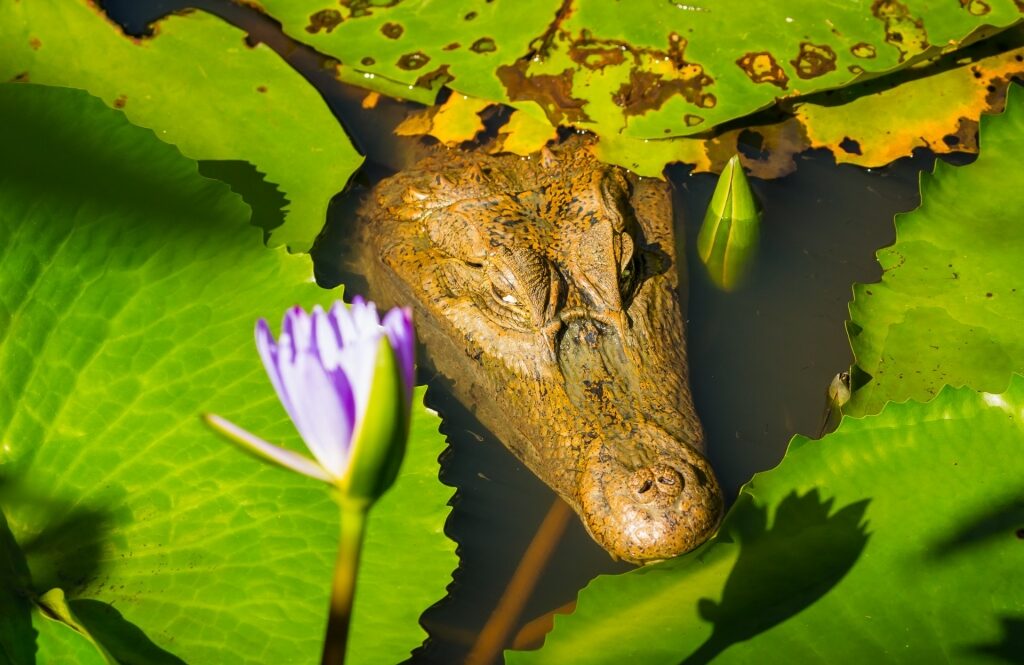
Caiman
One of the best Tobago attractions to visit that’s just a short drive from Scarborough is Corbin Local Wildlife Park. Home to an alluring display of the region’s staggering fauna, the park unfolds in wondrous bursts of color with acres of sugarcane, plantain, mango trees, and wild heliconia.
One of Corbin Local Wildlife Park’s biggest draws is the wild caiman—a large, toothy reptile similar to an alligator—that can be found basking in the lily ponds.
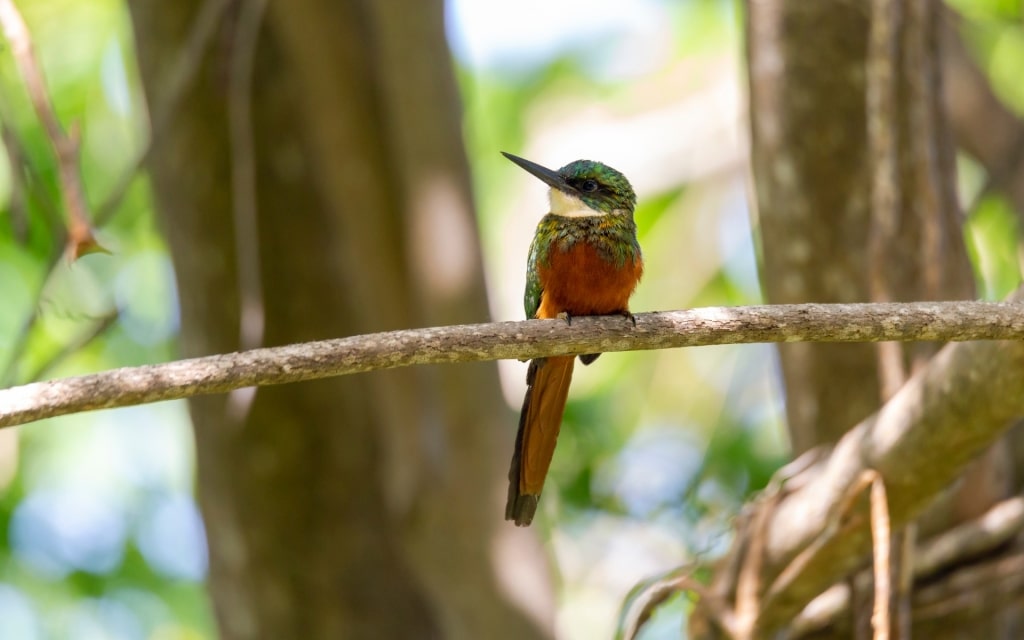
Jacamar
Spot agoutis—similar in appearance to guinea pigs, only larger and with coarse hair—darting through bushes. Plenty of vibrant-looking birds, including manakins, jacamars, hummingbirds, herons, and mot-mots can be spotted flitting from tree to tree.
Embark on a guided tour of the park’s forest to meet some of the rescued and endangered species, including slippery boa constrictors, mango snakes, armadillos, and green iguanas.
Savor Local Cuisine in Store Bay

Pelau
A celebrated stretch on Tobago’s west coast, Store Bay is a buzzy beach offering sun loungers, umbrellas, beach bars, restaurants, souvenir stores, and watersport rental. Once you’ve dusted the sugary sand off your toes, it’s time to savor some of Tobago’s comforting cuisine.
Look out for rich and flavorful local fare such as the one-pot chicken and rice dish called pelau. You could plump for another Store Bay standout, the mouthwatering curried crab and dumplings, from one of the beach kiosks Miss Jean’s or Miss Trim’s.
You’ll also find deep-fried conch, grilled shrimp, lobster, and a selection of ultra-fresh tropical fruits to write home about. After your meal, sit back and savor a zesty rum punch as you stare out at the glistening water.
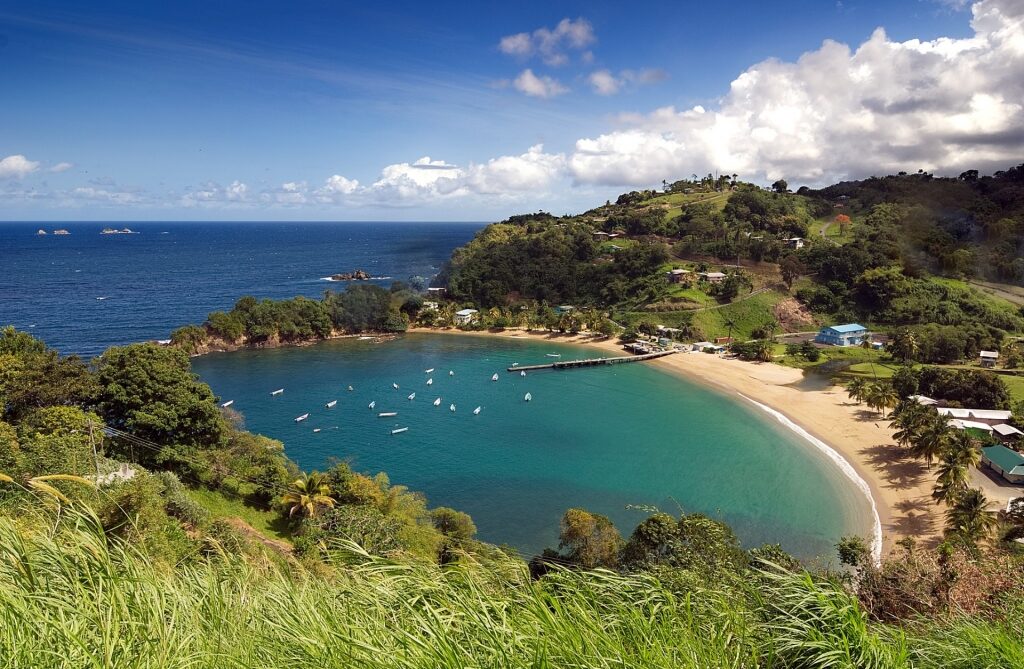
Tobago
Tobago is a gorgeous tropical island with jaw-dropping natural landmarks and laid-back towns and villages. Explore our exciting cruises to Tobago and the Southern Caribbean on our website.
